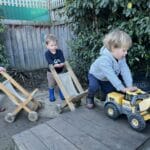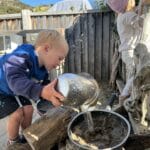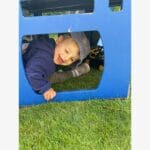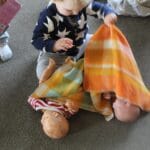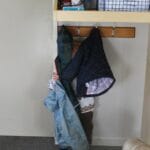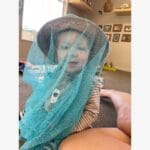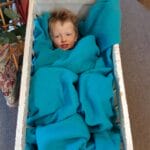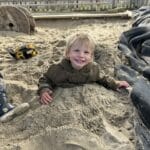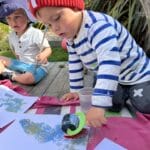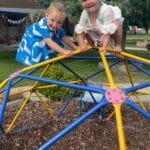
Resource—


Urges are patterns of behaviour – they can tell us a lot about the child’s journey of discovery and their inner world.
An urge is a pattern of behaviour that tamariki can have in their play where they have the urge to play in a certain way. These are also known as schemas. It’s crucial for tamariki that we recognise this and can observe and identify them. This gives us a deeper understanding of the unique child and allows us to further build their learning.
Urges help us to see the child more fully as an investigator and constructor of meaning.
Through urges, tamariki test their thoughts and make all-important connections in their brains. When these are recognised, they enable children to feel seen, heard, and empowered to make sense of their world.
These urges can be identified in repetitive behaviours and ways of playing. Children are experts of their own world, innately knowing what they want to learn, and it is our job to delight in that. Sometimes, these urges lead to behaviours or expressions that can be difficult to understand from an adult’s perspective. Recognising them can help us understand the child, allowing more freedom for play and providing an environment and resources to allow for these expressions.
It is important for tamariki to develop dispositions to help them enjoy life to the fullest.
Dispositions include courage, building trust, involvement, developing perseverance and confidence, and taking responsibility. Urges allow these dispositions to blossom, as tamariki are engaged with their hearts and minds as they concentrate on their urge. When they engage in urges, they are entirely absorbed and in a flow in their play. This deep level of engagement positively impacts their well-being and sense of empowerment.
For example, we might observe a child’s interest in playing with dolls, but as we observe, we see a pattern in the play with different objects and areas of play. We may notice the child covers the dolls, hides themselves in boxes, or paints their paper in one colour that covers the entire paper. This may show that the child has the urge of enveloping, meaning they like to cover objects and themselves.
So, what are common urges that we can see in children’s play:

Transporting
The act of carrying what you have collected to another place
Carrying many things at one time; using all parts of the body, buckets, bags, objects with wheels.
Posting
The act of putting something into a space or a hole, which may or may not be able to be retrieved.
The urge to post objects into or through things; cable reels, wine barrels, boxes, toilets. Learning about three dimensions and space, putting things in things!

The act of throwing something, at random, with the intention of hitting something, this can include the trajectory of our own bodies, hitting the ground etc.
The urge to throw, drop, climb up, and jump off (the trajectory of their own bodies). This can also include interacting with things that are already moving, such as swings, chimes, and running water. It can be diagonal, vertical, or horizontal.

Enclosing
The act of getting inside something, or enclosing something into a space.
It’s not only cats who like to play in cardboard boxes! Getting in and out of boxes, cupboards, washing baskets, or putting things in contained spaces.
Enveloping
The act of making something or someone disappear under or within another material
The urge to cover both themselves and objects; covering themselves in a flannel when washing or covering their painting with one colour. Wrapping things in lots of layers of paper, sellotape. Covering items, themselves, or others in sand.

Rotation
The act of turning around and around in person, or turning and spinning objects around
The urge to interact with anything that goes around; anything that is circular or has curved lines. This includes wheels, water wheels, watching the washing machine on spin cycle, egg beaters, and spinning around. Rolling themselves around, feeling dizzy.
Orientation
The act of looking at things from a different body position than is usual, viewing from a different perspective
The urge to hang upside down; to get the view from under the table or on top of the box. Looking through their legs, lying back and looking at the clouds.

Construction
The act of making something, constructing a model in three dimensions, building.
The urge to build, construct things together, planks, blocks, blankets, to build structures, through whatever is available, glue, string etc.
Deconstruction
The act of taking something apart, breaking it down, wrecking it
The urge to pull apart; cutting with the scissors, tearing paper, knocking down towers and sandcastles. This can be linked with connecting and then followed by disconnecting.

Collecting
The act of gathering up things of interest to you to make a collection
Gathering up a collection of resources, often ones that are similar.
Patterning
The act of arranging things in patterns or making patterns.
The urge to create groups of different types. Gathering up objects and putting them in patterns or ordering in type/colour etc. arranging all the stones in one line, shells in another, autumn leaves from reddest to yellowest.
Connecting
The act of putting things together so they touch or are joined.
The urge to join; puzzles, marble runs, train tracks, threading beads, tying things together, convoys (trucks, friends etc.), knots and ropes, leashes.

Climbing
The act of leaving the ground by pulling oneself up using foot holds and hand holds.
The urge to climb is in response to balance and gravity, using trees, poles, playground, to get higher and higher. In infants, this can look like using pillows to help get higher, or other objects to pull themselves up on.
Balancing
The act of establishing a relationship to gravity by oneself, or with an object
Kicking legs and waving arms, hopping, skipping, twirling, balancing on edges, branches, plans, stones. Balancing objects, constructing towers from blocks , rocks.

One way of supporting children in their innate urges is to provide resources which allow for freedom of play and expression. Loose parts is a way that we do this, through open-ended resources where children can play and imagine with them in many possible ways.
Children are all individuals, and this is the same with urges of play. Some children clearly have one or two urges, and others have several. Some children have very strong urges and last for a long time, and some come one at a time for periods of time.
We recognise the depth of knowledge and insight parents and whanau have in identifying urges in their children. We invite you to talk to your child’s kaiako about any urges that you see to help us understand your child more. These discussions can help both the teacher and parent as we see patterns in play and can help in coming up with ideas of resources to support learning and help to understand some challenges urges can bring.
Children can teach us so much. How to play, how to discover, and how to be!
Adapted from “The Sacred Urge to Play” by Pennie Brownlee with Kimberly Crisp and www.treetopslearning.co.nz








